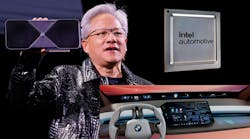Radio signals are part of many wireless-communications applications, from consumer and commercial through industrial and military systems. Whether in licensed or unlicensed applications, especially at RF and lower-microwave frequency bands, any operating environment can become tangled with too many signals. Some of them are signals intended for a receiver, others are intended but too much for a receiver to handle at one time, and some are simply unwanted signals or interference.
Those unwanted signals can start from many sources, whether they’re as familiar as an AM radio or television broadcast transmitter and or in the form of harmonics of intended signals or even excessive energy leaking from electronic devices as electromagnetic interference (EMI). Typically, unwanted signal interference starts with some form of transmitter or as electronic equipment lacking adequate shielding to maintain electromagnetic compatibility (EMC) for a given operating environment. By knowing a little more about these unwanted signals, they can be sidestepped by the desired signals or filtered out when they occur at some point outside of the frequency bands of intended signals.
Organizations such as the Federal Communications Commission (FCC) and the International Telecommunication Union (ITU), and even the Amateur Radio Relay League (ARRL), work hard to organize frequency-spectrum use into carefully organized and managed bands of frequencies for each application. This includes, for example, the 2.4- to 2.5-GHz band for Wi-Fi wireless local-area networks (WLANs) and their essential wireless access to the internet for many different electronic devices. Starting within the kilohertz range for AM radios through VHF/UHF broadcast television channels (Fig. 1), spectrum use is carefully monitored to prevent unwanted overlapping of signals that can interfere with the reception of designed signals.








